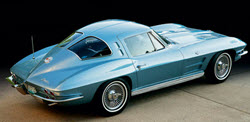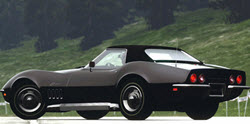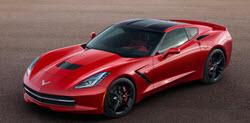The role of Zora Arkus-Duntov, the “Father of the Corvette.”
The Early Life of Zora Arkus-Duntov
Zora Arkus-Duntov, often heralded as the “Father of the Corvette,” was an instrumental figure in the transformation of the Chevrolet Corvette into one of the most celebrated sports cars in automotive history. His early life and career set the stage for his monumental contributions to the automotive industry. Born in Belgium in 1909, Duntov’s journey began in Europe. During his childhood, he moved to France, where he developed an early interest in engineering and automobiles, a passion that would shape his future endeavors.
Education and Early Interests
Zora’s keen interest in mechanics and cars emerged during his youth. Fascinated by the workings of various machines, he decided to further his understanding and pursue formal education in mechanical engineering. This decision led him to the prestigious School of Aeronautics in Berlin. In Berlin, he honed his skills under the tutelage of some of the best minds in aeronautics and engineering, which further deepened his interest in high-performance vehicles. His foundational knowledge in aerodynamics and engineering principles would later prove invaluable in his contributions to automotive design.
Joining General Motors
In the early 1950s, after gaining significant experience in the engineering field, Zora Arkus-Duntov’s career path took a landmark turn when he joined General Motors (GM). This opportunity coincided with GM’s introduction of the Chevrolet Corvette in 1953, the first mass-produced American sports car. Despite the excitement surrounding its launch, the original Corvette faced criticism due to its lackluster performance, a challenge that would soon capture Duntov’s attention.
Upon joining GM, Duntov quickly recognized the Corvette’s unrealized potential. He saw the possibilities that lay beneath its sleek exterior, a potential that could be unlocked with the right engineering enhancements. His vision was not only to improve the Corvette but to revolutionize it into a sports car that could stand on par with its European counterparts.
The Impact on the Corvette
The Corvette’s transformation under Duntov’s guidance is a testament to his engineering prowess and visionary approach. One of his initial challenges was to address the Corvette’s performance issues. The car’s original engine, a modest six-cylinder, was inadequate for achieving high performance. Duntov firmly believed in the necessity of a more powerful engine to truly elevate the Corvette’s reputation.
He successfully advocated for the introduction of a V8 engine, which replaced the existing six-cylinder powerplant. This change marked a significant shift in the car’s capabilities. The new V8 engine not only enhanced the Corvette’s speed but also dramatically improved its overall performance metrics. The result was a vehicle that began to earn respect and admiration on the global stage, erasing doubts about American sports cars’ ability to compete with prestigious European models.
Beyond the engine, Duntov’s attention to aerodynamics also played a crucial role in the Corvette’s enhancement. His insights ensured that the car’s design supported higher speeds and improved handling, further solidifying its status as a true sports car.
Racing Innovations
Under Duntov’s leadership, Chevrolet’s engagement with racing took on a new dimension. Recognizing the importance of motorsports as a platform for proving performance excellence and innovation, he pushed for the Corvette’s active involvement in racing. Zora was instrumental in developing the Corvette SS, a groundbreaking racing prototype that embodied his ideas and expertise.
Duntov’s impact extended beyond engineering feats; his advocacy for motorsport involvement was vital in establishing the Corvette’s prestige in competitive contexts. His passion for racing and performance inspired GM to support racing projects that would elevate the brand and demonstrate the Corvette’s capabilities on the track.
The legacy of Duntov’s racing ambitions is reflected in the Corvette’s enduring status as a formidable competitor in motorsports. Through his initiatives, the Corvette not only proved its mettle in racing but also gained a dedicated following of performance enthusiasts worldwide.
Duntov’s Lasting Legacy
Zora Arkus-Duntov retired from General Motors in 1975, yet his influence endures in automotive design and engineering. He left an indelible mark on the Corvette, turning it from a fledgling sports car into a symbol of American automotive excellence recognized worldwide. Beyond the Corvette, Duntov’s commitment to innovation and engineering excellence resonated throughout the entire industry.
The contributions of Zora Arkus-Duntov continue to inspire designers and engineers who strive to balance performance, design, and innovation. The Corvette remains a celebrated icon of engineering brilliance, a legacy deeply intertwined with Duntov’s pioneering efforts. His vision and dedication have not only defined a brand but also showcased the potential of engineering to transform ideas into iconic creations. For those wishing to immerse themselves further into the history of Zora Arkus-Duntov and the remarkable evolution of the Corvette, extensive automotive archives and scholarly publications provide a wealth of knowledge and insights to explore.



